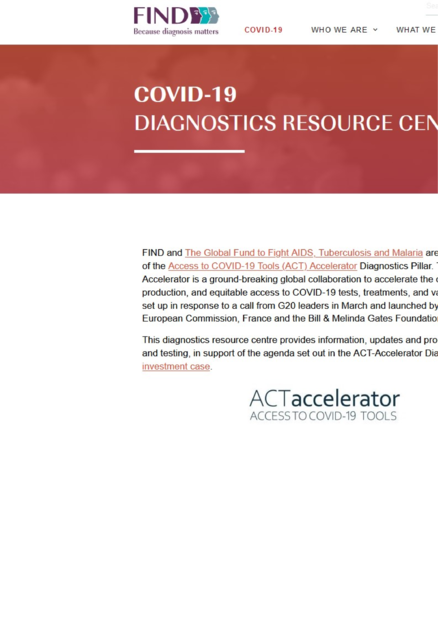FIND COVID-19 Diagnostics Resource Centre
recommended
FIND is collating an overview of SARS-CoV-2 tests that are commercially available or in development for the diagnosis of COVID-19. We do not guarantee that this is a comprehensive list, since the information below has been submitted voluntarily by test suppliers and is not independently verified. Please find the latest lists on the website


